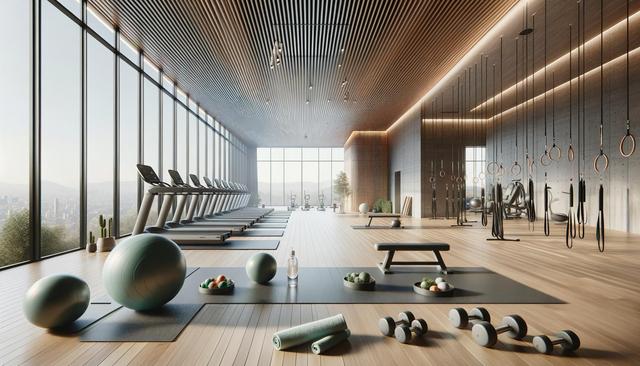Why Senior-Focused Gyms Matter
As we age, physical activity becomes increasingly important for maintaining mobility, balance, and overall health. Senior-focused gyms are designed with these needs in mind, offering equipment, classes, and environments that cater to older adults. These gyms are not just about exercise—they’re about community, safety, and support. Staff are usually trained to work with individuals who may have specific health conditions such as arthritis, osteoporosis, or limited mobility, ensuring that exercises are adapted to fit personal needs.
Moreover, senior-friendly gyms often feature low-impact equipment and slower-paced classes that reduce the risk of injury. These adjustments make it easier for older adults to build strength, improve cardiovascular health, and enhance flexibility. The inclusive atmosphere also encourages social interaction, which is beneficial for mental well-being and combating loneliness.
What to Look for in a Senior-Friendly Gym
Finding the right gym starts with understanding what features and services are most important for your comfort and fitness goals. Here are some factors to consider when evaluating gyms for older adults:
- Accessibility: Look for gyms with easy access entrances, elevators, and parking close to the entrance.
- Trained Staff: Choose facilities with certified trainers experienced in working with seniors or those with medical conditions.
- Low-Impact Equipment: Machines that are easy to use and reduce strain on joints can make workouts safer and more effective.
- Group Classes: Offerings like yoga, tai chi, or water aerobics that are designed for older adults can be both fun and beneficial.
- Cleanliness and Safety: A clean, well-maintained environment with clear safety protocols and emergency procedures is essential.
Before signing up, it’s also a good idea to ask about trial periods or tours. Visiting the gym in person helps assess how comfortable and welcoming the space feels.
How to Start Your Search Locally
Searching for a gym for the elderly near you can begin with a few simple steps. Online directories and maps often allow you to filter results by age-targeted services. Typing keywords like “senior fitness center near me” or “gym for over 60s” can yield helpful results. You can also:
- Check community centers or local health departments that may offer fitness programs or partner with senior gyms.
- Ask your healthcare provider or physical therapist for recommendations based on your health needs.
- Visit retirement or senior living communities that may have on-site fitness centers open to the public.
Libraries, bulletin boards in grocery stores, and local newspapers can also be a source of information about senior fitness options in your area. Don’t overlook word of mouth—friends or family members might know of excellent local gyms tailored to older adults.
Benefits of Senior Fitness Programs
Joining a gym specifically designed for older adults offers more than just physical benefits. While improved strength, flexibility, and endurance are key outcomes, the social and emotional advantages are equally valuable. Many seniors find that regular workouts help reduce symptoms of depression and anxiety, enhance sleep quality, and boost overall mood.
Structured group classes also provide a sense of routine and purpose, which can be particularly important for those who are retired or living alone. Participating in fitness activities with peers fosters a sense of belonging and can lead to lasting friendships.
Additionally, many senior-focused gyms offer wellness programs that include:
- Nutrition advice tailored to older adults
- Health seminars on managing chronic conditions
- Fall prevention workshops
- Regular health screenings and progress assessments
These services help create a comprehensive approach to wellness that goes beyond exercise alone.
Making the Most of Your Gym Experience
Once you’ve found a gym that suits your needs, it’s important to make the most of the experience. Start by setting realistic goals and working with a trainer to create a personalized fitness plan. Consistency is key, and even small improvements in flexibility, strength, or stamina can make a big difference in daily life.
Stay motivated by keeping your workouts varied and enjoyable. Trying new classes or rotating equipment routines can prevent boredom and keep you engaged. Remember to listen to your body and rest when needed—recovery is just as important as activity, especially for older adults.
Also, take advantage of all the resources your gym offers. Whether it’s a monthly wellness seminar, a walking club, or a post-workout social hour, these extras can enrich your experience and contribute to overall well-being.




Leave a Reply